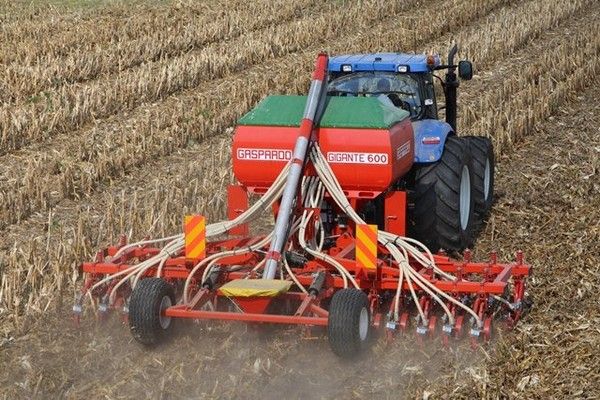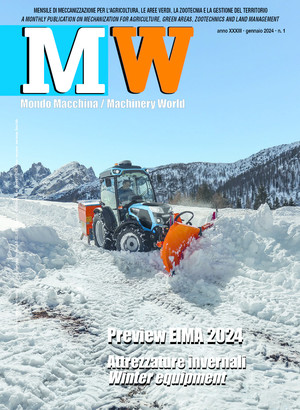
New horizons: electronics, variable sowing density
Precision sowing shows significant advantages in agronomic efficiency and the use of productive factors, while soil mapping helps adjust crop operations to specific conditions in individual plots, also using the same sensors to read soil data
Italian farmers are showing increasing interest in precision agriculture so as to dose productive factors or manage some operations in terms of what the field demands. Until the recent past, this approach has been concerned primarily with mineral fertilisers, making it possible to break free from average pre-established doses and make the best of highly productive areas while avoiding excess dosage on less productive areas.
Experiments and adoption by some farms have shown significant economic and environmental advantages. It seems reasonable to think that a similar variability in other crop operations could also contribute to a farm’s productivity. Varying how crop operations are applied to areas with
differing properties and productivity is a new frontier for farmers, facilitated by the recent appearance of electrically activated seed drills and more precise and versatile control systems.
When sowing becomes variable
Variable dosage sowing applies varying seed densities to different areas of a field in terms of varying soil and other conditions. A field’s variability becomes a priority since the first aim is to identify homogeneous areas in which interactions between factors limiting productivity have determined stable differences in yield over time. This information will allow the farmer to plan uniform or differentiated applications according to the area in question.
Mapping production data at harvest time is one of the most widespread ways of identifying spatial differences thanks to the high technological level achieved with harvesters and the importance of knowing harvest yields as a primary indicator of crop efficiency and the agricultural practices being used.
These localised production data equalised for humidity and with eventual errors corrected can be used to draw up crop production maps to be flanked by further localised sampling programmes to analyse the soil’s chemical and physical properties and define production levels according to different areas.
Hitherto, the system’s most widely used practical application has been to vary sowing density, but the chance to adjust cultivation to field variability has resulted in the evolution of other drill components, for example, by controlling and regulating how intensely the row-cleaners operate, so that what they do is appropriate to the quantity and quality of crop residues. This helps reduce hair-pinning, but also sowing depth by varying the load exerted on the soil in order to respond correctly to the sowing depth set as a function of soil conditions such as texture, compaction, unevenness of the surface and so on.
Sowing with electronic transmission
The search for more productive seed drills with more precise seed distribution suitable for easier use in variable density sowing has led manufacturers to review seed drill components extensively. In particular, they have been working on ways of replacing traditional mechanical transmissions with electronic ones capable of controlling and working each distributor unit. Electronic transmission applied directly to the distributor ends the need for mechanical transmissions and gears, which means a significant simplification in manufacturing and maintenance terms.
Each distribution unit thus has a small electric motor to power the drill disks whose rotation speed respect to the forward speed defines the distance between the seeds. The electrical power can be supplied independently or supplied from the tractor’s battery with lower power consumption.
Evolution in control systems
While manufacturers were developing new sowing units, research was also being pushed ahead into seed drill control systems, making control over peripheral devices more precise, but also redesigning them to acquire data as well. Compared to a few years ago, sensors following the behaviour of all the sowing units can pick up useful information such as the effective distance between sown seeds, double sowing, dud sowings, etc. But this has also required important developments in data communication and control.
Many manufacturers have already introduced wireless-based sowing systems so that no cables are needed to transmit and receive data (apart from power cables). Operating parameters are thus controlled fro, monitors, or more often tablets, present in the cab on a special support, from which it interfaces with the seed drill, enabling active control over sowing parameters and the seed drill’s calibration. An integrated DGPS aerial is also fitted to ensure that the data from the field are recorded. Since the operator can now manage operating information through these many-functioned control units, farm management is made easier, but a new future of interaction and communication also appears on the farm’s horizon.








